A year ago, the contractor went into administration after nearly 60 years in business. Pete Duff tells Dave Rogers what happened and what needs to change
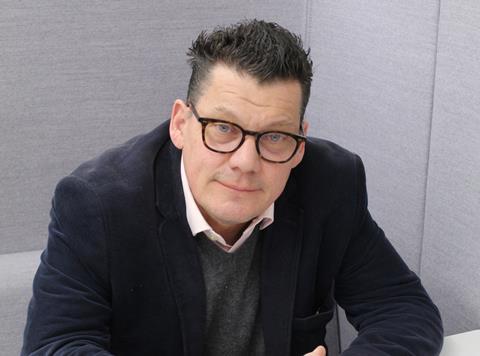
For a while, getting on for two years ago now, it seemed like a lot of firms were going bust, one after the other.
Looking back, the run started when Henry Construction, a £400m turnover business which specialised in residential work, sank in early June 2023.
Its demise was confirmed on a blazing hot day, the sort that makes people think life feels good. A few months later, it was followed by Buckingham, a contractor whose work on the Fulham and Liverpool football stadium rebuilds meant its collapse made national headlines.
After Buckingham went, London M&E specialist MJ Lonsdale went down, seemingly out of the blue, just a few weeks later at the start of October. Another shock.
As the autumn of 2023 wore on, rumours about the health of ISG began to circulate – and with good reason, it would turn out. It too went out of business last September.
Also adding to the gloom in that autumn of 2023 were Laing O’Rourke’s results; the country’s biggest private contractor announced in November that year that it had racked up an astonishing £288m pre-tax loss, the biggest in its history.
At the tail end of this period, which lasted perhaps eight or nine months, Osborne, a historic name that had been in business almost 60 years, also went. Its collapse in April 2024 drew a line under a brand that had, for better or worse, always been seen as an old-fashioned, gentleman contractor.
It had begun a restructuring programme to help balance the books. The previous year it had sold its offsite arm, called Innovare, to Bowmer & Kirkland, while its property maintenance business was also offloaded later in 2023, this time to social housing maintenance specialist Cardo Group.
It had already sold its £200m turnover infrastructure business in September 2021 to private equity, banking a near £40m profit on the disposal.
As the firm was restructuring its business, so too was its board. Chief executive Andy Steele had left suddenly in autumn 2021 after just eight months in the job. He was replaced as interim boss by Dave Smith, a former Wates chief operating officer, who had originally been brought in as a non-executive.
A year after Steele went, the firm announced the boss of affordable housing provider Orbit as its new group chief executive. Except Mark Hoyland never joined and Smith, who had been due to step down but remain on the group board, carried on.
A new chief financial officer was recruited as well. An English graduate from Cambridge University, Pete Duff had spent seven years at Laing O’Rourke as its finance director for its Europe hub.
“It was a great place, I loved it,” he says. He had been recruited by Smith and Osborne chairman Andrew Osborne. He left O’Rourke because he wanted to be top dog somewhere. “I was looking for a number one role. The timing was fortuitous.”
Duff arrived in September 2022. “There were problems when I joined,” he admits. “There were two or three very difficult contracts and, brutally, they hadn’t dealt with covid very well.”
He says the jobs were in areas where it didn’t really swim. “When you’re away from what you normally do, be it a new market, a different size of job, location – that’s often when you find problems.”
But Duff says the business was not yet on the brink when he joined. “It was absolutely salvageable. I wouldn’t have joined otherwise.”
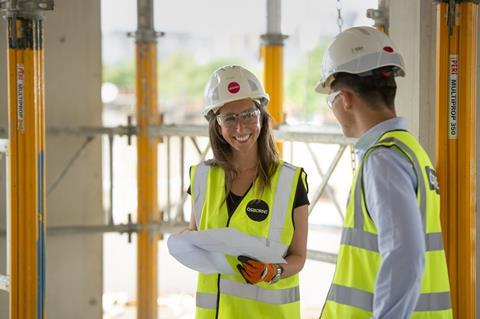
He has decided to speak now because he thinks there are lessons to be learnt for others from Osborne’s demise and comes armed with an action plan of where the industry can improve, so in the future an “absolutely salvageable” business can indeed be saved rather than ending up in the knacker’s yard.
There are several reasons, he says, why firms like Osborne get themselves into difficulty. “What did for Osborne was the size of the losses on two or three jobs. The size of the organisation was only capable of absorbing a certain amount.”
In fact, he says that firms with a turnover of anywhere between £100m and £750m find it hard to overcome the really bad losses that can dog contractors. They are just not big enough, is the long and the short of it.
Duff reckons that, if firms have 10 jobs on their books, one will do well – “spectacularly well” is how he puts it – two or three will do better than planned, four or five do about what is expected and “maybe one or two won’t do quite as well as you hope. Things happen [but], in the round, that’s a decent model.”
But he adds: “It’s when the one or two that won’t do quite so well become four or five, or when the one or two are so spectacularly bad that it eliminates everything else for three years.”
The collateral damage of losses also has other impacts. Clients get nervous, pipelines of work dry up, cash gets reduced further as a result and that makes lenders and the supply chain nervous.
“All of which I understand,” he says. “Nobody wants to be the person that takes a punt [on a firm] and then has someone six months later [after it has gone bust] going, ‘what did you do that for’?”
>> See also: The collapse of Osborne: how covid, Truss, ‘market noise’ and failed rescue deals sent historic name under
He says the problem is especially acute in the public sector, where the basic financial metrics allowing firms like Osborne to price and win jobs are very black and white. “They’re either pass or fail.”
Auditors got spooked, too. Osborne’s accounts became overdue and its last set of audited numbers were filed for the year to 30 September 2021 and published in July 2022.
But Duff says the business plan that he and Smith worked on was well received by lenders. “It was a good solid business,” he says. “It was generating cash and increasing margin.
“Nobody said, ‘I don’t think it’s a good business plan’. But, in the environment [then], the return on the investment was too long term and it came with some risk and not [enough] certainty. If you’re sat there with interest rates of 5% and you’ve got money to invest, you’d probably put it on deposit.”
He says Osborne’s attempts to raise money were also hampered by construction’s image and the ongoing backdrop of high-profile failures and business wobbles.
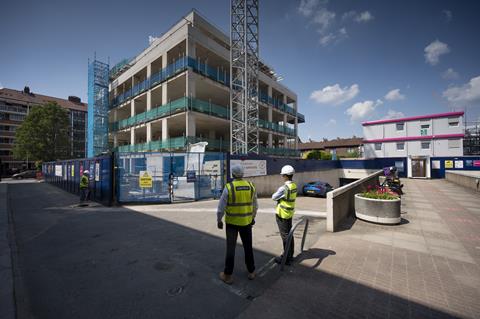
“We would point to the business plan, explain what had gone wrong and produce a reliable and credible business plan to trade out if it. We tried and we tried and we tried – and we very nearly got there. People lent us money, only it was on a much more short-term basis.
“One of the biggest issues construction has is its reputation. There was a perfect storm we were operating in. Basically, it was, ‘who’s next?’ That was the least helpful environment to be trying to convince somebody this was a good business.”
He thinks that too many lessons don’t get learnt once a project is completed for one simple reason. “We’re often finishing late and we haven’t got time to do it properly.
“Post-completion, everyone is busy bargaining and negotiating [so that] a true transparent lessons learnt exercise isn’t particularly helpful because it inhibits the ability to pass on your pain to someone else.
“When things go well, everything is infinitely better when people come together and try and solve the problem, rather than people running for cover to protect their own space.”
Fiscal discipline is important, too, he says. “There is always somebody prepared to trade a bit of margin for cash. That is just dynamic pricing but, when it turns into low balling and people convince themselves that they need this big top line so much that they’ll take pain on the bottom line, it becomes a real issue.
“I don’t think people knowingly sign up for something that’s going to lose a load of money. They might sign up for something close to break even if it’s a decent top line number but, if you can’t make the job work for the cost of the price that’s on the table, either it’s not the right job or it’s not do-able.”
Osborne formally called in the administrators a year ago. Chairman Andrew Osborne was the family member at the helm of a business his father, Geoffrey, had started all those years ago. “Andrew was one of the finest men I ever worked with,” says Duff, “in terms of morality and principles.
“Never did he think about the money the family could be seen to have lost. He just wanted to get the business right.”
In its last set of audited accounts, the firm had an income of £337m and made a net profit of £4.8m. At the point it sold the infrastructure business, it employed around 950 people.
At the time it went into administration last April, around 100 people were working there with turnover, which had been reduced by the sales of the infrastructure, offsite and property maintenance businesses, at around £150m. “Many very quickly found alternative employment,” says Duff.
In the final few weeks, staff were still focused on finishing jobs and trying to win new work. “I was humbled by everyone’s commitment to the cause.”
At one stage, several trade buyers were mulling a move to pick up parts of the slimmed-down business, but that interest came and went.
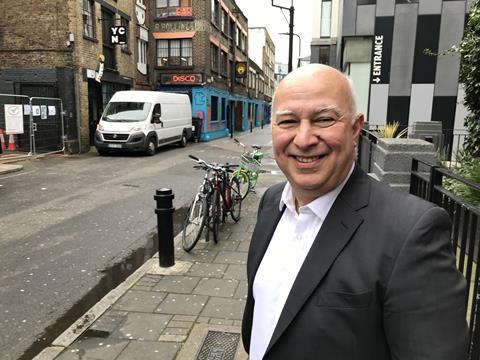
Looking back, he says the sale of infrastructure, the offsite and property businesses helped to save hundreds of jobs. “One of the things we were absolutely determined to do was find a safe haven for all those businesses because they were good businesses. I’m really pleased we managed to do that.”
In its report on the collapse, administrator RSM wrote: “Towards the latter part of 2023, the construction business had succeeded in completing its legacy projects, reducing its overheads, and was now trading profitably on its current work.
“It was continuing to win new work and it had been selected as preferred bidder on a number of public sector projects. Once these projects moved to site, the cash position was forecast to improve sufficiently for the company to be cash generative and provide a return to a potential investor.”
“It’s a shame,” Duff says. “There are such fine margins between survival and extinction.”
Duff’s manifesto for change
The first thing that should be said is this: Pete Duff loves construction. “It ‘s a fantastic industry. Look at all the things it does.”
He has taken time off since Osborne collapsed to be with his family, in part motivated by the death of his own dad aged just 47. He has been enjoying and following in person Aston Villa’s Champions League run, which is seeing them play Paris Saint-Germain in the quarter-finals next month.
Like every fan, he manages to get in a dig against the local rivals – in Villa’s case, Birmingham City. “They’re so far beneath us now…”
Aged 54, he has enjoyed his time away. “I’ve worked really hard for the last 30 years.” But he is not done with construction just yet. “I love it.”
Here are some of the things he thinks could be done to make it better:
Speed up planning approvals
“It becomes really hard having teams waiting to go. It becomes hard to manage the pipeline and cashflow. This isn’t like retail where you can go and do something else while you’re waiting because these jobs last nine, 12, 18 months.
“Contractors aren’t going to sit around and wait. They might have to rebid – which puts in more delay.”
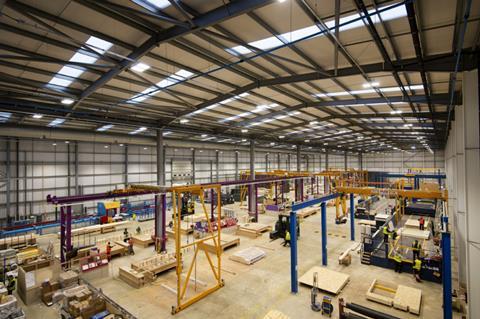
Don’t do single-stage lump sum
“That’s not a good way to do business. The primary problem is often the design. You only get the design at stage 3.
“If it were up to me, I would be insisting all jobs stay in PCSA – a renegotiable PCSA – until the end of design stage 4. It’s often the M&E that mucks it up. That’s expensive.”
Properly embrace the pain-gain share model
“Where construction works really well is properly embracing the pain-gain share model. Too often, the pain and the gain are inequitably distributed with too many people trying to pass off the pain to others while absorbing whatever gain they can get for themselves.
”When pain-gain embraces hearts and minds, everyone does well. Or, if the job is difficult, no one does that badly. Pain-gain works much better on established client relationships rather than one-offs.
“The industry [also] needs to get better at managing change in terms of design change, scope creep. Often you have finished a job and you are still arguing about whether [extensions of time] should be eight weeks or 12.”
Having visibility of pipeline
“The visibility of pipeline is terrible. It’s really hard to plan. It makes it difficult to invest in training, people, R&D – it’s hard to manage cashflow.
“If the government could publish a five, 10, 30-year pipeline, then it enables people to bid for what they are best at, what capacity they have got to deliver at the best price for them and the buyer.”
MMC needs volume
“It needs volume because it’s repeatable business. But there’s always an element of bespoke required, and that rather eliminates the efficiencies of what you’re trying to do. It’s got to be a game-changer for the industry.”
Minimum margins on frameworks of 8%
“Margins are just too low. [Pre-tax margins of] 8% ought to give you enough room for contingency and risk.”
Co-locate teams
“Pain gain works best also where teams are colocated and where this principle extends to architects designers builders and client all in a seamless and agreed process.”
Set realistic budgets
“There are too many instances in terms of schools and retrofit of procurers simply demanding something which their budget can’t afford and no ability to compromise so too many schemes are shelved after much effort and cost pricing them up.”




























No comments yet